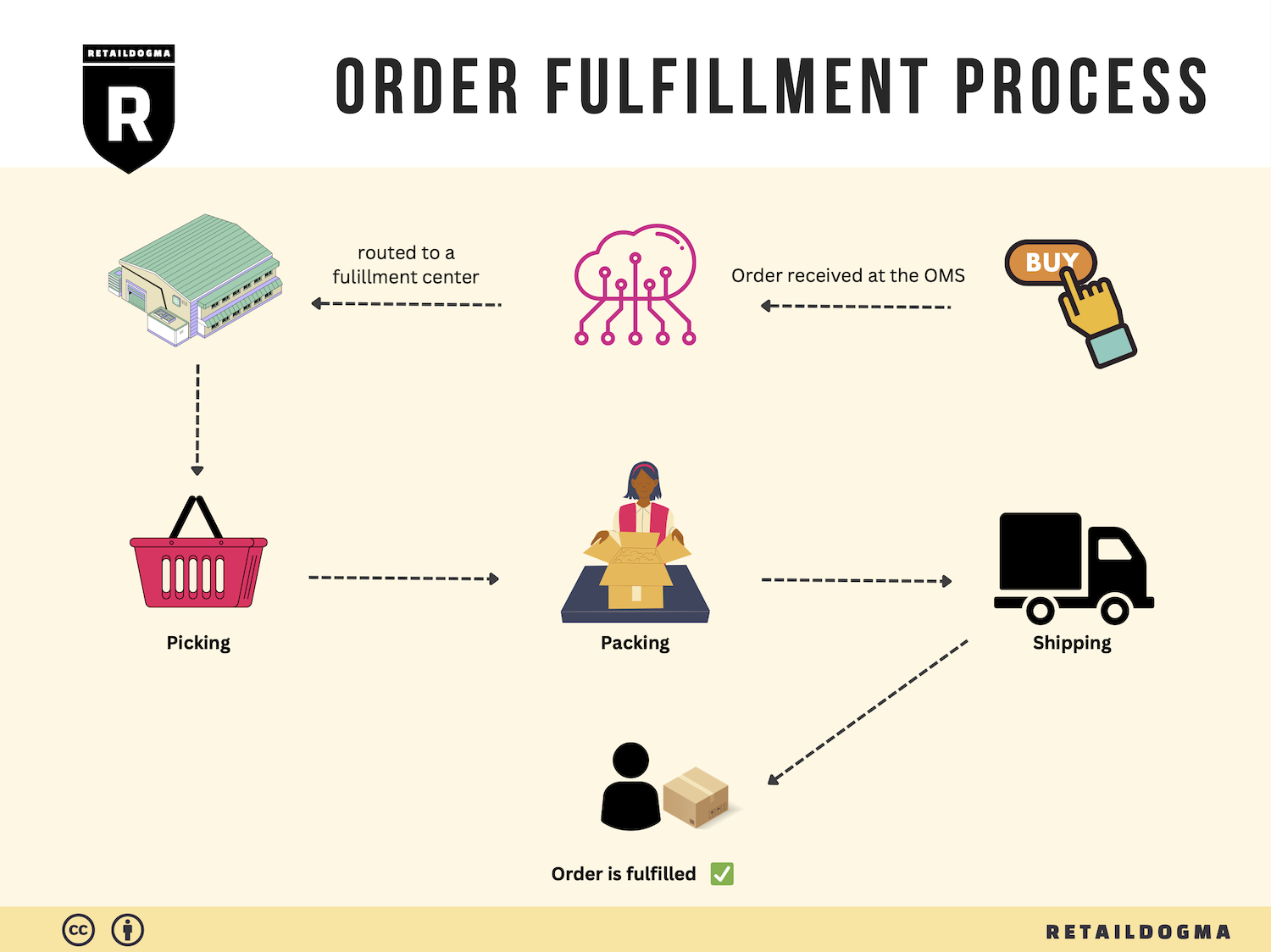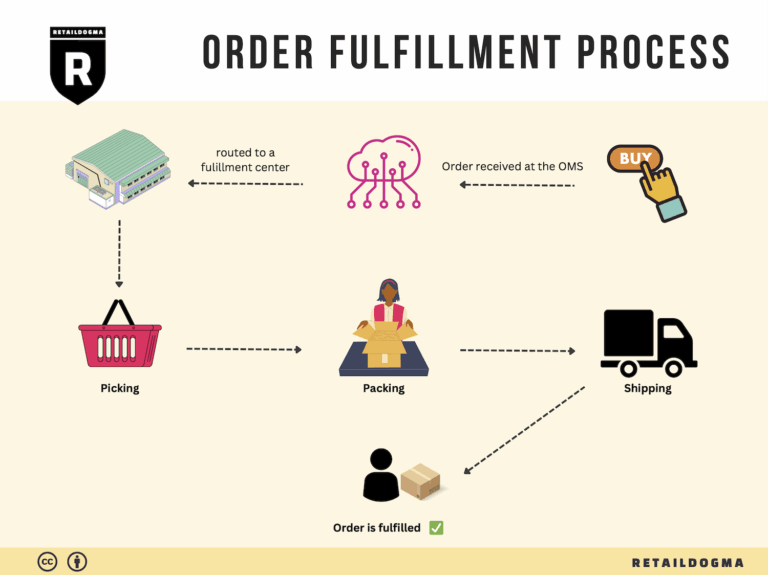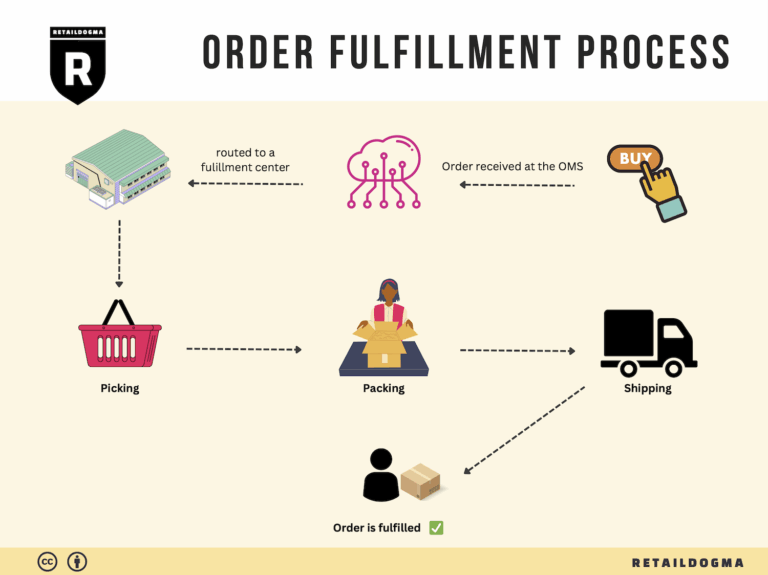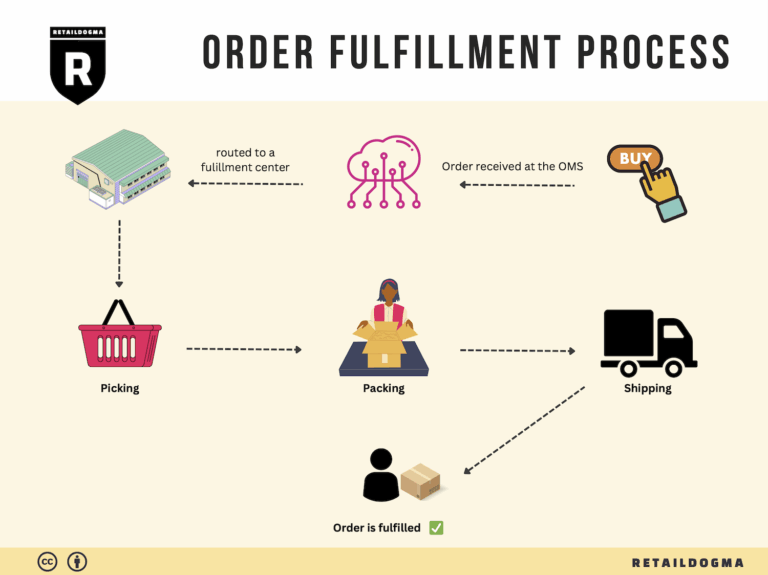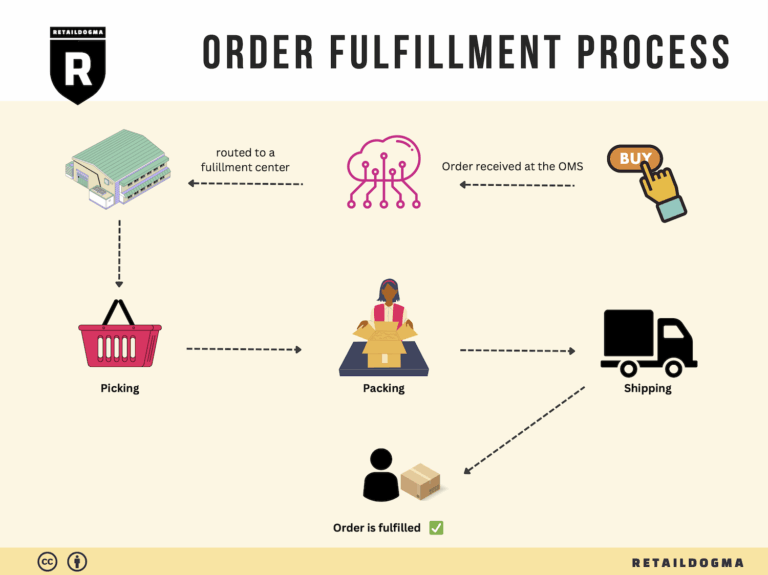How Order Fulfillment Works: A Step-by-Step Guide for Businesses
What is E-commerce Fulfillment? An Introduction for Growing Businesses
Understanding E-commerce Fulfillment: A Key to Growth
As a growing online business, you may find yourself inundated with the demands of packing and shipping orders. The excitement of increased sales can quickly turn into frustration when fulfillment becomes a bottleneck. Juggling inventory management, order processing, and timely delivery often feels overwhelming, leaving you questioning how to scale effectively without sacrificing customer satisfaction.
At its core, e-commerce fulfillment is simply the process of getting a product from your inventory to your customer’s doorstep. It encompasses everything from receiving and storing inventory to processing orders and shipping products. Understanding this process is crucial for any business looking to enhance efficiency and grow sustainably.
This guide will delve into the various models of e-commerce fulfillment, including Third-Party Logistics (3PL) and Fulfillment by Amazon (FBA). Each model offers unique advantages and challenges, and knowing which one aligns with your business goals is vital. We will also explore the core services associated with fulfillment, such as inventory management, order processing, and shipping logistics.
Choosing the right fulfillment partner can make or break your operational efficiency. This guide will provide insights into what to consider when selecting a logistics partner, such as their technology, scalability, and customer service capabilities. We’ll also discuss pricing structures to help you understand the potential costs involved in outsourcing your fulfillment.
The ultimate goal of this guide is to empower you with the knowledge needed to make informed decisions about your logistics strategy. By understanding the ins and outs of e-commerce fulfillment, you can streamline your operations, reduce overhead costs, and enhance customer satisfaction—all essential components for achieving long-term success in the competitive e-commerce landscape.
Whether you are just starting out or looking to optimize your existing operations, this comprehensive guide will equip you with the tools and insights needed to navigate the complexities of e-commerce fulfillment with confidence.
What You’ll Learn In This Guide
- What is E-commerce Fulfillment? An Introduction for Growing Businesses
- The Order Fulfillment Process: From ‘Buy’ Button to Customer’s Door
- Comparing Fulfillment Models: In-House vs. 3PL vs. Dropshipping
- A Deep Dive into Amazon FBA: Pros, Cons, and Who It’s For
- Core Services Offered by Fulfillment Centers
- How to Choose a Fulfillment Partner: A 6-Point Checklist
- Understanding Fulfillment Pricing: A Breakdown of Common Fees
- Frequently Asked Questions (FAQs) about Fulfillment
- Conclusion: Is Outsourcing Fulfillment the Right Move for Your Business?
- Important Disclaimer
The Order Fulfillment Process: From ‘Buy’ Button to Customer’s Door
1. Receiving Inventory
The first step in the order fulfillment process is receiving inventory from suppliers. When products arrive at your warehouse or fulfillment center, they must be checked for quality and accuracy against purchase orders. This step is crucial because it ensures that you have the correct products in the right quantities before they are stored.
During this phase, key terms such as SKU (Stock Keeping Unit) play a significant role. Each product should have a unique SKU that helps in tracking and managing inventory effectively. By logging SKUs into your inventory management system, you can maintain visibility over stock levels and reduce the risk of discrepancies. Accurate receiving lays the groundwork for efficient order fulfillment, as it ensures that your inventory is reliable and ready for subsequent steps.
2. Warehouse Storage
After inventory is received and verified, the next step is to store the products in the warehouse. Efficient warehouse storage is essential for optimizing space and ensuring quick access to items when orders are placed. Products should be organized logically, often by category, size, or demand frequency, to facilitate ease of picking later on.
Implementing a systematic storage strategy, such as FIFO (First In, First Out) or LIFO (Last In, First Out), can help manage stock effectively. By utilizing technologies like barcode scanners and inventory management systems, you can keep track of where each SKU is located within the warehouse. Proper storage not only enhances retrieval efficiency but also minimizes the chances of stockouts or overstocking, which can negatively impact your bottom line.
3. Order Picking
Once an order is placed, the next step is order picking, where items are selected from the warehouse to fulfill the customer’s request. This step is critical because it directly impacts order accuracy and fulfillment speed. A well-organized picking process can significantly enhance operational efficiency.
Using tools such as pick lists or automated picking systems can streamline this process. A pick list outlines the items to be collected and their corresponding SKUs, ensuring that the picker retrieves the correct products. Depending on the size and scale of your operation, methods such as batch picking or zone picking may be employed to further enhance efficiency. Effective order picking minimizes errors and ensures that customers receive exactly what they ordered, thus enhancing overall satisfaction.
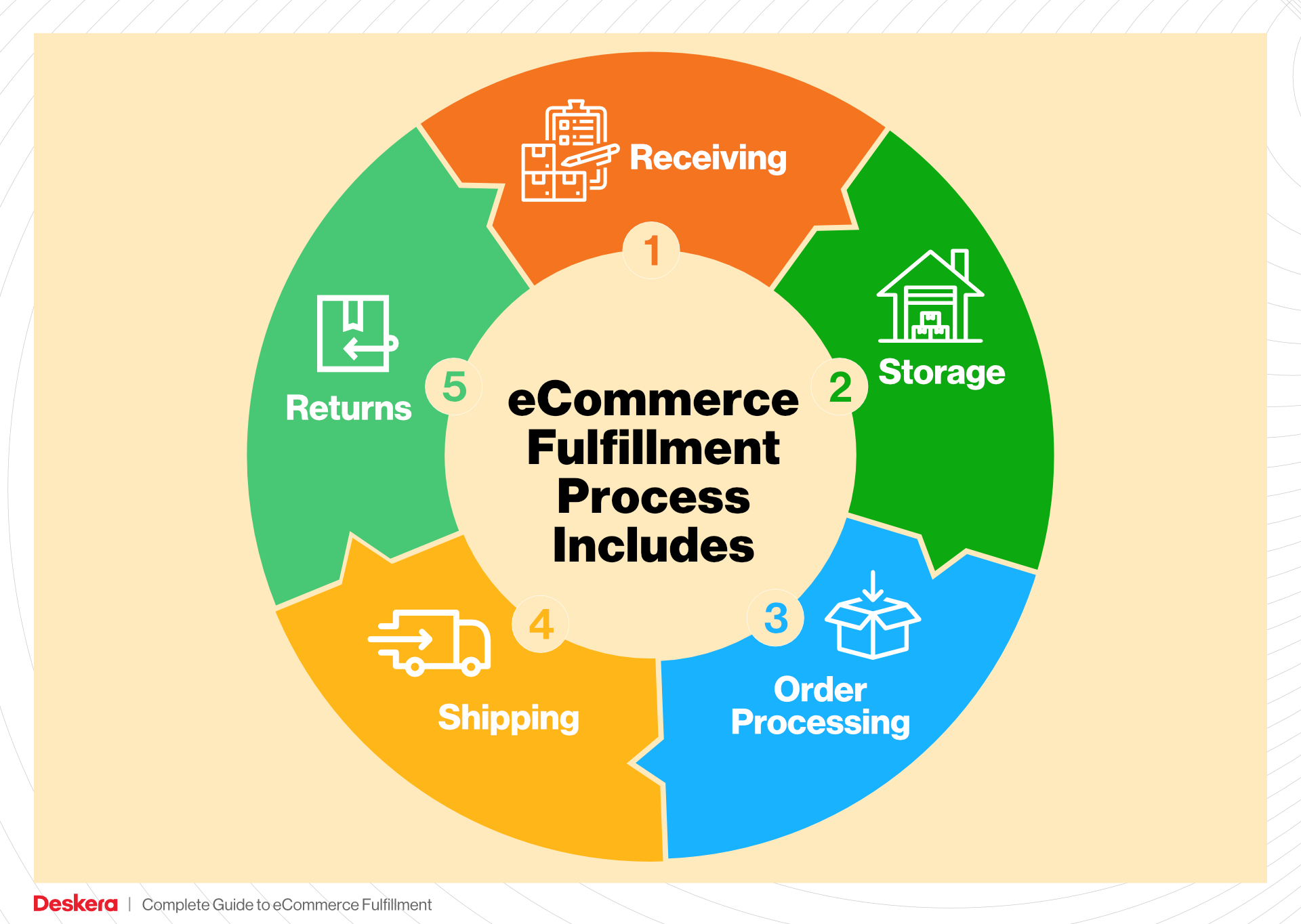
4. Order Packing
Once the items are picked, they move to the packing stage. This step involves securely packaging products for shipment, ensuring they arrive at the customer’s door in pristine condition. Proper packing is not only about aesthetics; it’s also about protecting the products during transit and minimizing returns due to damage.
Key terms here include packing slips and protective packaging materials. A packing slip outlines the contents of the shipment, while protective materials (e.g., bubble wrap, packing peanuts) safeguard fragile items. Efficient packing can also help reduce shipping costs by optimizing the size of the package. By implementing standardized packing processes and utilizing appropriate materials, businesses can ensure a professional presentation and a positive unboxing experience for customers.
5. Shipping & Delivery
The final step in the order fulfillment process is shipping and delivery. Once orders are packed, they are handed over to shipping carriers for distribution. This step is paramount because it directly affects delivery times and customer satisfaction. A reliable shipping strategy can differentiate your business in a competitive market.
Key terms to consider include shipping labels and tracking numbers. Shipping labels contain essential information for carriers, while tracking numbers allow customers to monitor their order’s journey. Offering multiple shipping options, such as standard, expedited, or same-day delivery, can cater to various customer needs and preferences. Additionally, maintaining partnerships with reputable carriers will enhance reliability and ensure timely deliveries. By optimizing your shipping and delivery processes, you can improve customer experiences and drive repeat business.
In conclusion, understanding and optimizing each step of the order fulfillment process—from receiving inventory to shipping and delivery—can significantly enhance operational efficiency and customer satisfaction. By implementing best practices and leveraging technology throughout these steps, e-commerce businesses can scale effectively and meet the demands of the modern consumer.
Comparing Fulfillment Models: In-House vs. 3PL vs. Dropshipping
Comparison of Fulfillment Models
| Model | Who Handles Inventory | Best For (Business Stage) | Key Advantage | Key Disadvantage |
|---|---|---|---|---|
| In-House Fulfillment | The business itself | Established brands with stable sales | Full control over inventory and processes | High overhead costs and labor intensity |
| Third-Party Logistics (3PL) | 3PL provider | Growing businesses and startups | Scalability and access to logistics expertise | Less control over inventory and processes |
| Dropshipping | Supplier or manufacturer | New businesses or niche markets | Low startup costs and inventory risk | Lower profit margins and dependency on suppliers |
In-House Fulfillment
In-house fulfillment involves managing the entire logistics process within your own facilities. This model is best suited for established brands that have consistent sales and a clear understanding of their inventory needs. The primary advantage of in-house fulfillment is the level of control it offers; businesses can directly oversee inventory levels, shipping methods, and quality control. This can lead to improved customer satisfaction as businesses can tailor their fulfillment processes to meet specific customer needs. However, the disadvantages are significant—high overhead costs associated with warehousing, staffing, and technology investments can strain resources, particularly for smaller businesses. Additionally, the labor intensity of managing logistics can detract from focusing on core business activities, such as product development and marketing.
Third-Party Logistics (3PL)
Third-party logistics (3PL) providers specialize in managing logistics for businesses, allowing them to outsource their fulfillment operations. This model is particularly beneficial for growing businesses and startups looking to scale without the burden of managing logistics themselves. The key advantage of 3PL is the scalability it provides; businesses can easily adjust their logistics needs based on sales fluctuations without making heavy investments in infrastructure. Moreover, 3PL providers often have access to advanced logistics technology and expertise, which can enhance operational efficiency. However, relying on a 3PL means less control over the fulfillment process, which can lead to challenges in maintaining brand standards and customer service expectations. Additionally, businesses may face complexities related to communication and coordination with their logistics partner.
Dropshipping
Dropshipping is a fulfillment model where businesses sell products without holding any inventory themselves. Instead, when a customer makes a purchase, the business forwards the order to a supplier or manufacturer, who then ships the product directly to the customer. This model is ideal for new businesses or those operating in niche markets, as it requires minimal upfront investment and eliminates the risks associated with holding inventory. The key advantage of dropshipping is the low startup cost, which allows entrepreneurs to test product ideas and market demand without significant financial commitment. However, dropshipping also has notable disadvantages, including lower profit margins due to reliance on third-party suppliers and potential quality control issues. Additionally, businesses may face longer shipping times and less control over the customer experience, which can hinder brand loyalty and satisfaction.
Conclusion
Choosing the right fulfillment model is crucial for the success of your e-commerce business. Each model has its unique advantages and disadvantages, making it essential to align your choice with your business stage, growth ambitions, and operational capabilities. In-house fulfillment offers control but comes with high costs, while 3PL provides scalability and expertise at the expense of some control. Dropshipping presents a low-risk entry point for new businesses but may impact profit margins and customer experience. By carefully evaluating these models, you can select the one that best suits your operational needs and customer expectations, enabling you to scale effectively in the competitive e-commerce landscape.
A Deep Dive into Amazon FBA: Pros, Cons, and Who It’s For
Understanding Fulfillment by Amazon (FBA)
Fulfillment by Amazon (FBA) is a service provided by Amazon that allows sellers to store their products in Amazon’s fulfillment centers. Amazon takes care of storage, packaging, and shipping, as well as customer service and returns for these products. This service has become a cornerstone for many e-commerce businesses, enabling them to leverage Amazon’s extensive logistics network and customer base to streamline their operations and increase sales.
How FBA Works
-
Product Listing: Sellers create product listings on Amazon, indicating that they are using FBA. When a customer orders a product, Amazon takes charge of the fulfillment process.
-
Inventory Management: Sellers send their products to Amazon’s fulfillment centers. Inventory is stored in Amazon’s warehouses, where it is managed by Amazon’s systems.
-
Order Fulfillment: When a customer places an order, Amazon picks, packs, and ships the product directly to the customer. This process is designed to be efficient and fast, often resulting in same-day or two-day shipping for Prime members.
-
Customer Service: Amazon handles all aspects of customer service for FBA orders, including inquiries and returns, ensuring that customers receive support even after the sale is made.
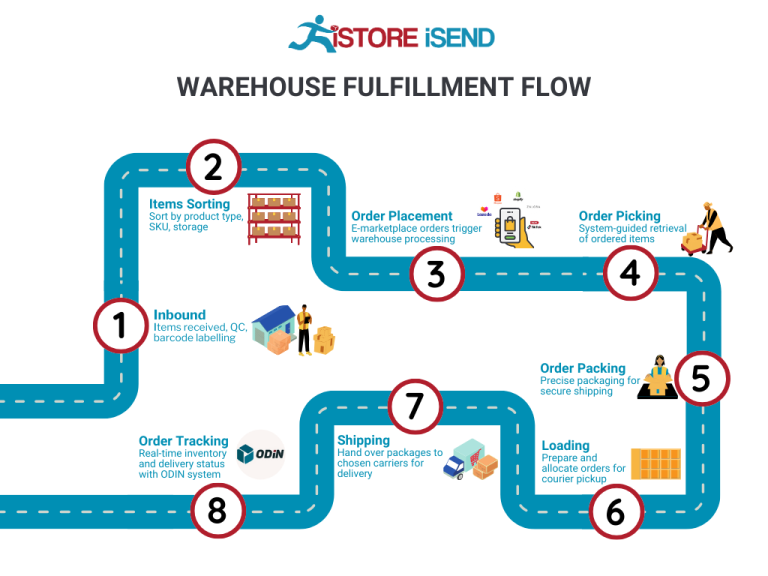
-
Returns Management: If a customer wants to return a product, Amazon manages the return process, making it easy for the customer and allowing sellers to focus on other aspects of their business.
Pros of Using FBA
Prime Eligibility
One of the most significant advantages of FBA is the eligibility for Amazon Prime. Products fulfilled by Amazon are marked as “Prime eligible,” which can significantly increase their visibility and appeal to millions of Prime members who prioritize fast, free shipping. This can lead to higher sales and increased customer loyalty.
Customer Trust
Selling through Amazon provides a level of credibility that can be challenging to achieve independently. Customers often trust Amazon’s platform for its established reputation, customer service, and easy return policies. This trust can translate into higher conversion rates for sellers utilizing FBA.
Multi-Channel Fulfillment
FBA is not limited to just Amazon sales. Sellers can also use FBA to fulfill orders from their own websites or other sales channels, allowing for a comprehensive multi-channel strategy. This flexibility means that businesses can streamline their fulfillment operations across various platforms, centralizing inventory management while tapping into multiple revenue streams.
Simplified Logistics
By outsourcing logistics to Amazon, sellers can focus on other critical aspects of their business, such as marketing and product development. FBA simplifies the fulfillment process, reducing the complexity associated with shipping, warehousing, and customer service.
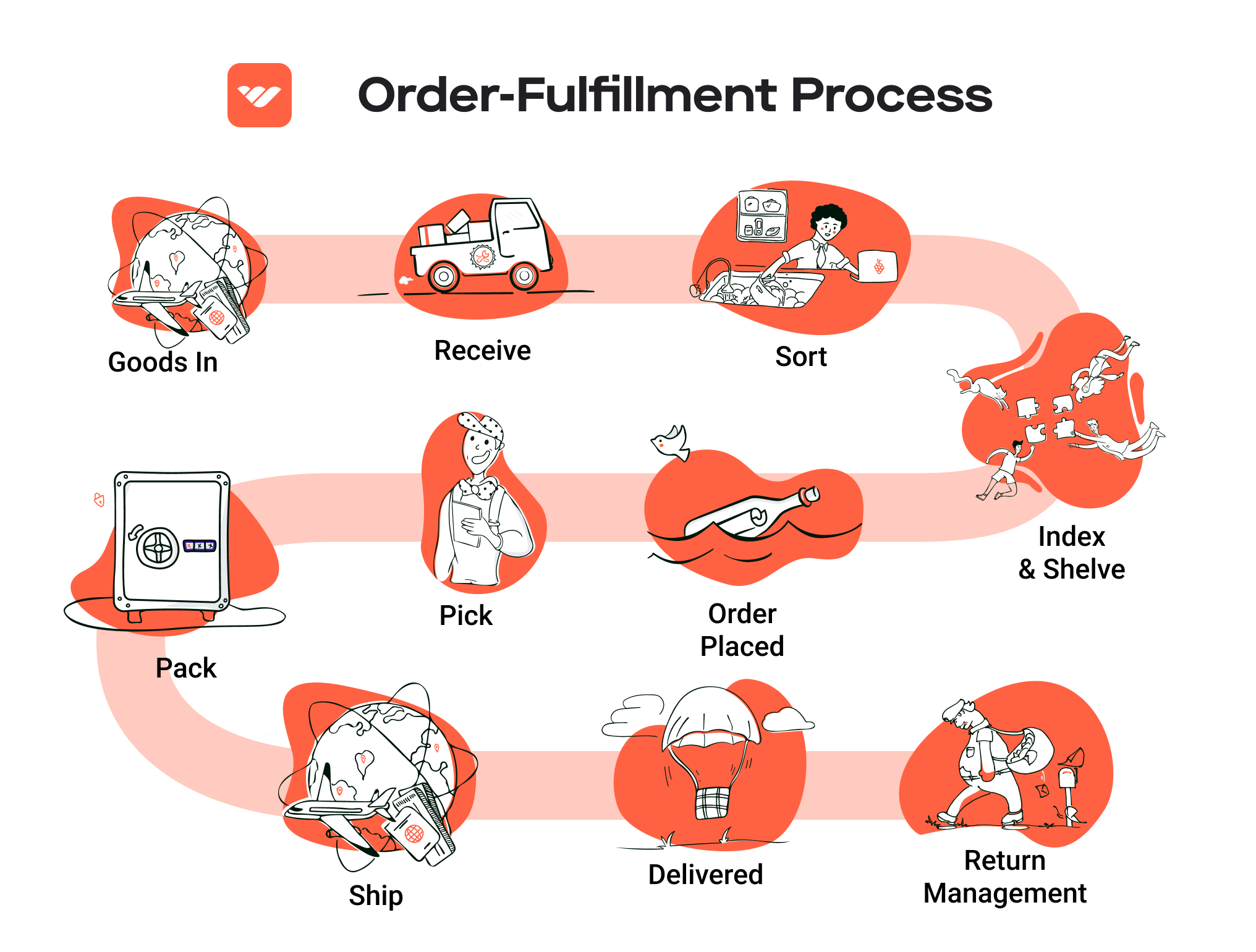
Scalability
FBA allows businesses to scale quickly without the need for substantial investment in warehousing and logistics infrastructure. As sales grow, sellers can easily increase their inventory in Amazon’s fulfillment centers, allowing them to respond to demand without significant upfront costs.
Cons of Using FBA
High Fees
While FBA provides numerous benefits, it also comes with significant fees. These can include storage fees for keeping products in Amazon’s warehouses and fulfillment fees based on the size and weight of the items. For some sellers, especially those with low margins, these costs can eat into profits.
Strict Inventory Rules
Amazon has strict inventory policies that sellers must adhere to. This includes guidelines on how to prepare and package products for shipment to fulfillment centers. Failing to comply with these rules can result in additional fees or even the removal of inventory from Amazon’s warehouses.
Commingling Risks
FBA operates on a commingling model, where products from different sellers may be stored together. This can create challenges for sellers, particularly if there are quality issues with a product. If a customer receives a defective item, it can lead to negative reviews for the seller, even if the defect originated from another seller’s inventory.
Limited Control Over Fulfillment
While FBA simplifies logistics, it also means that sellers have less control over the fulfillment process. This can be concerning for businesses that prioritize a specific customer experience, as they must rely on Amazon’s systems and processes.
Inventory Management Challenges
Managing inventory levels can be more challenging with FBA, especially during peak seasons. Sellers need to balance stock levels to avoid excess storage fees or stockouts, which can impact sales and customer satisfaction.
Who is FBA Best For?
Fulfillment by Amazon is best suited for:
-
Small to Medium-Sized Businesses: Companies that lack the resources to manage their own logistics can benefit greatly from outsourcing fulfillment to Amazon. FBA allows them to tap into Amazon’s infrastructure and customer base without the overhead costs associated with warehousing and shipping.
-
Brands Looking to Scale: Businesses planning to scale quickly can leverage FBA to manage increased order volumes without needing to invest in additional infrastructure. This is particularly advantageous during seasonal peaks or promotional periods.
-
Sellers with Established Products: If a seller has a product that is already performing well, using FBA can enhance visibility and sales by providing access to Amazon Prime customers.
-
Multi-Channel Retailers: Brands that sell on multiple platforms can benefit from FBA’s ability to fulfill orders from various sales channels, simplifying inventory management and order processing.
In summary, FBA can be a powerful tool for e-commerce businesses looking to streamline their operations and expand their reach. However, sellers should carefully weigh the pros and cons to determine if FBA aligns with their business goals and operational capabilities.
Core Services Offered by Fulfillment Centers
Inventory Management & Warehousing
Inventory management and warehousing are foundational services provided by fulfillment centers, ensuring that e-commerce businesses maintain optimal stock levels while minimizing costs. This service encompasses the systematic tracking of inventory from the moment it arrives at the warehouse until it is shipped to customers.
Effective inventory management allows businesses to have real-time visibility into stock levels across various sales channels, which is crucial for an omnichannel strategy. With advanced inventory management systems (IMS), fulfillment centers can automate stock replenishment, forecast demand, and manage inventory across multiple locations.
Benefits:
1. Reduced Overstock and Stockouts: By leveraging accurate inventory data, businesses can avoid the pitfalls of overstocking, which ties up capital, and stockouts, which can lead to lost sales and damaged customer loyalty.
2. Cost Efficiency: Efficient warehousing practices reduce operational costs associated with storage and handling, allowing businesses to allocate resources more effectively.
3. Improved Customer Satisfaction: With better inventory visibility, businesses can fulfill orders more accurately and quickly, enhancing the overall customer experience.
Pick and Pack Services
Pick and pack services are essential for e-commerce operations, as they directly impact order fulfillment efficiency. This process involves selecting items from the warehouse shelves (picking) and then packaging them for shipment (packing) based on customer orders.
Fulfillment centers utilize advanced technology and organized systems to streamline the pick and pack process. This can include barcode scanning, automated picking systems, and optimized packing stations that ensure orders are prepared quickly and accurately.
Benefits:
1. Increased Order Accuracy: Automated systems reduce human error during the picking process, leading to higher accuracy in fulfilling customer orders. This minimizes returns and enhances customer trust.
2. Faster Turnaround Times: Efficient pick and pack operations enable businesses to process orders quickly, which is critical in meeting consumer expectations for fast shipping.
3. Scalability: As e-commerce businesses grow, fulfillment centers can easily adjust their pick and pack operations to handle increased order volumes without sacrificing quality or speed.
Kitting and Assembly
Kitting and assembly services allow businesses to bundle multiple products into a single package or prepare items for sale. This service is especially beneficial for companies that offer product bundles, promotional kits, or customized orders.
Fulfillment centers manage the entire kitting process, from assembling components to packaging the final product. This service can be particularly valuable for seasonal promotions or special events, where businesses may need to create unique offerings rapidly.
Benefits:
1. Enhanced Product Offerings: By providing kitting services, businesses can create unique product bundles that appeal to customers, potentially increasing average order value and attracting new buyers.
2. Time Savings: Outsourcing kitting and assembly frees up internal resources, allowing businesses to focus on core operations such as marketing and customer service.
3. Improved Supply Chain Efficiency: By consolidating products into kits before shipping, fulfillment centers can reduce shipping costs and streamline the logistics process.
Returns Management (Reverse Logistics)
Returns management, or reverse logistics, is a crucial service offered by fulfillment centers that helps e-commerce businesses efficiently handle product returns. This process includes receiving returned items, inspecting them, restocking if necessary, and managing customer refunds or exchanges.
An effective returns management system is vital in an omnichannel fulfillment strategy, as it allows businesses to maintain customer satisfaction even when orders do not meet expectations. Fulfillment centers can also provide valuable insights into return trends, helping businesses identify potential issues with their products or services.
Benefits:
1. Cost Reduction: Efficient returns management can significantly lower the costs associated with handling returns, including processing fees and restocking expenses.
2. Customer Retention: A seamless returns process enhances customer experience, fostering loyalty and encouraging repeat purchases. Customers are more likely to shop with brands that offer hassle-free return policies.
3. Data-Driven Insights: By analyzing returns data, businesses can gain insights into product performance and customer preferences, enabling them to make informed decisions regarding inventory and product offerings.
In conclusion, partnering with a fulfillment center that offers these core services can greatly enhance an e-commerce business’s operational efficiency, customer satisfaction, and overall competitiveness in the market. By leveraging expert fulfillment capabilities, businesses can focus on growth and innovation while ensuring their logistics processes are streamlined and effective.
How to Choose a Fulfillment Partner: A 6-Point Checklist
Location & Warehouse Network
Importance:
The location of your fulfillment partner’s warehouses plays a crucial role in your ability to deliver products quickly and efficiently to your customers. Proximity to major markets can reduce shipping times and costs, enhancing customer satisfaction.
Questions to Ask:
– Where are your warehouses located, and how does this impact shipping times to my primary customer base?
– Do you have multiple warehouse locations, and how do you determine which warehouse fulfills an order?
– Can you provide insights on your shipping capabilities across different regions?
Technology & Integrations
Importance:
A robust technology platform is essential for streamlining operations, automating processes, and providing real-time inventory visibility. The ability to integrate with your existing e-commerce platforms and other software solutions is vital for a seamless order fulfillment process.
Questions to Ask:
– What technology do you use for inventory management and order processing?
– Can your system integrate with my current e-commerce platform, CRM, and accounting software?
– Do you offer real-time tracking for orders, and how is this information shared with both my team and my customers?
Specializations (e.g., Cold Storage, Oversized Items)
Importance:
Not all fulfillment partners are equipped to handle specialized products. If your business involves perishables, oversized items, or hazardous materials, finding a partner with the right capabilities is critical for compliance and product integrity.
Questions to Ask:
– What types of products do you specialize in fulfilling?
– Do you have specific facilities for handling cold storage or oversized items?
– How do you ensure compliance with regulations related to specialized products?
Scalability & Capacity
Importance:
As your business grows, your fulfillment needs will likely change. A partner that can scale with you—whether through increased capacity or additional services—will help you avoid disruptions and maintain service quality.
Questions to Ask:
– How do you handle peak seasons or unexpected spikes in order volume?
– Can you accommodate fluctuations in inventory levels and order volume?
– What are your capabilities for scaling operations as my business grows?
Pricing and Contracts
Importance:
Understanding pricing structures and contract terms is essential to avoid unexpected costs and ensure that your partnership remains financially viable. Clear terms can help you plan your budget more effectively.
Questions to Ask:
– What is your pricing model (e.g., per order, per item, monthly fees)?
– Are there any hidden fees for services like storage, packing, or returns?
– What are the terms of the contract, including cancellation policies and service level agreements?
Customer Support & Reviews
Importance:
Reliable customer support can make a significant difference in how smoothly your fulfillment operations run. A partner that offers responsive support can quickly address issues that arise, minimizing disruptions to your business.
Questions to Ask:
– What customer support options do you provide (e.g., phone, email, chat)?
– What are your average response times for support inquiries?
– Can you provide references or reviews from other clients, particularly those in my industry?
Conclusion
Choosing the right fulfillment partner is a critical decision that can significantly impact your e-commerce operations and customer satisfaction. By using this checklist, you can systematically evaluate potential partners to ensure they align with your business needs and growth plans. Remember to prioritize the factors that matter most to your specific business model and customer base, and don’t hesitate to seek out partners who can provide tailored solutions to your unique challenges.
Understanding Fulfillment Pricing: A Breakdown of Common Fees
Initial Setup Fees
Initial setup fees are one-time charges that cover the onboarding process when you start using a fulfillment service. These fees can vary significantly based on the complexity of your operations and the specific requirements of your business. Common components included in the initial setup fees may involve integration with your existing e-commerce platforms, customizing software to fit your operational needs, and training your team to use the new system effectively.
Typically, these fees can range from a few hundred to several thousand dollars, depending on the scale of your business. When calculating these fees, fulfillment providers will consider factors such as the number of sales channels you need to integrate, the volume of products to be managed, and any specialized services required for your unique business model.
Receiving Fees
Receiving fees are charged for the process of accepting and processing inventory into a fulfillment center. These fees cover the labor and equipment necessary to unload, inspect, and store incoming goods. The costs can vary based on the volume of products being received and the complexity of your inventory (e.g., bulk items versus individual units).
Generally, receiving fees are calculated per unit or per pallet. For instance, you might pay a flat fee for each pallet received or a variable fee based on the number of individual items. Understanding your supply chain’s inbound volume and frequency will help you estimate these fees accurately.
Storage Fees (per pallet/bin)
Storage fees are ongoing charges for keeping your inventory in the fulfillment center. These fees can be structured in various ways, but they are most commonly calculated on a per-pallet or per-bin basis. Storage fees typically reflect the space your products occupy in the warehouse and can vary based on the length of time items remain in storage.
For example, you might encounter a monthly fee per pallet stored, which can range from $10 to $50, depending on the provider and location. Some fulfillment centers may also charge additional fees for items that remain in storage beyond a specified time frame, often referred to as long-term storage fees. Businesses should monitor their inventory turnover rates to manage storage costs effectively.
Pick & Pack Fees (per item/order)
Pick and pack fees cover the labor involved in retrieving products from storage and preparing them for shipment. This process includes picking the correct items, packing them securely, and labeling the packages for delivery. These fees are typically calculated on a per-item or per-order basis, depending on the fulfillment provider.
For instance, a fulfillment center might charge $1 to $3 per item picked and packed. If your business has a high volume of orders with multiple items per order, these fees can add up quickly. To minimize costs, businesses should consider optimizing their order sizes and streamlining their inventory management practices to reduce pick and pack complexity.
Shipping Fees
Shipping fees are often one of the most significant costs associated with fulfillment. These fees can vary based on several factors, including the weight and dimensions of the package, the shipping method selected (e.g., ground, expedited), and the destination. Most fulfillment centers negotiate shipping rates with carriers, which can result in discounted rates for their clients.
Shipping fees are generally calculated based on the following criteria:
- Weight: Heavier packages typically incur higher shipping costs.
- Dimensions: Dimensional weight pricing can apply, meaning larger packages may be charged based on their size rather than weight alone.
- Destination: Shipping to remote or international locations often comes with additional surcharges.
It is crucial for businesses to understand their shipping requirements and negotiate rates where possible to optimize their overall fulfillment expenses.
Tips for Getting an Accurate Quote
-
Provide Detailed Information: Be transparent about your product types, average order sizes, and expected order volumes. This information will help fulfillment providers give you a more accurate estimate.
-
Ask About All Fees: Ensure you inquire about all potential fees, including hidden charges for services like returns processing, long-term storage, or additional handling requirements.
-
Compare Multiple Providers: Don’t settle for the first quote. Compare at least three different fulfillment providers to understand the market rates and service offerings.
-
Consider Long-Term Costs: Look beyond initial setup fees and consider ongoing costs like storage and shipping to get a comprehensive view of what the fulfillment will cost your business.
-
Negotiate Terms: Don’t hesitate to negotiate terms and rates based on your expected volume. Many fulfillment providers are willing to offer discounts for larger commitments.
By understanding the breakdown of fulfillment pricing and how each fee type is calculated, e-commerce business owners can better manage their logistics costs and make informed decisions that support their growth objectives.
Frequently Asked Questions (FAQs) about Fulfillment
1. What is omnichannel order fulfillment?
Omnichannel order fulfillment is a strategy that integrates various sales channels, allowing businesses to manage inventory and fulfill orders from a unified platform. This approach enhances customer experience by enabling seamless transitions between online and offline shopping, ensuring consistent order processing and returns across all channels.
2. How does omnichannel fulfillment differ from multichannel fulfillment?
While both strategies involve selling through multiple channels, omnichannel fulfillment provides a unified approach to inventory management and order processing. In contrast, multichannel fulfillment often isolates inventory based on individual sales channels, which can lead to inefficiencies and challenges in stock management.
3. What are the benefits of implementing an omnichannel fulfillment strategy?
Implementing an omnichannel fulfillment strategy can lead to greater order efficiency, improved inventory visibility, more accurate reporting, increased sales and revenue, extended brand exposure, and enhanced customer satisfaction. This comprehensive approach allows businesses to meet modern consumer expectations effectively.
4. What is a fulfillment center?
A fulfillment center is a specialized facility that stores products and manages order processing, including picking, packing, and shipping items directly to customers. Unlike traditional warehouses that primarily focus on storage, fulfillment centers are designed to streamline the distribution process and optimize order fulfillment speed.
5. What is a 3PL?
A third-party logistics (3PL) provider is an external service provider that manages logistics and supply chain functions for businesses. This can include warehousing, inventory management, order processing, and transportation. Partnering with a 3PL can help businesses scale their operations without the need for significant upfront investment in logistics infrastructure.
6. How much do fulfillment services cost?
The cost of fulfillment services varies widely based on several factors, including the volume of orders, the complexity of the services required, and the specific pricing model of the fulfillment provider. Common pricing structures include per-order fees, storage fees, and pick-and-pack fees. It’s essential to evaluate multiple providers to find a solution that aligns with your budget and operational needs.
7. How can I ensure accurate inventory management across channels?
To maintain accurate inventory management in an omnichannel setup, it’s crucial to utilize integrated inventory management software that provides real-time data across all sales channels. This technology allows businesses to track stock levels, manage orders, and update inventory counts automatically, reducing the risk of overselling or stockouts.
8. What are some common challenges of omnichannel fulfillment?
Common challenges include managing complex logistics, maintaining inventory accuracy across channels, ensuring timely deliveries, and meeting high customer expectations. Additionally, businesses may face difficulties in integrating different technology platforms and coordinating between online and offline operations.
9. How can I improve customer satisfaction with omnichannel fulfillment?
Improving customer satisfaction involves providing multiple purchasing and return options, such as Buy Online, Pick Up In-Store (BOPIS) or Buy Online, Return In-Store (BORIS). Additionally, ensuring fast and accurate order processing, transparent communication about order status, and personalized customer service can significantly enhance the overall shopping experience.
10. Is omnichannel fulfillment suitable for all types of businesses?
While omnichannel fulfillment can benefit a wide range of businesses, it is particularly advantageous for those with diverse product offerings and customer bases. Companies that operate both online and brick-and-mortar stores, or those looking to expand their reach across multiple marketplaces, will find that an omnichannel strategy enhances operational efficiency and customer satisfaction. However, businesses should assess their specific needs and capabilities before fully committing to this approach.
Conclusion: Is Outsourcing Fulfillment the Right Move for Your Business?
Evaluating the Benefits of Outsourcing Fulfillment
Outsourcing fulfillment can be a transformative decision for e-commerce businesses aiming to scale effectively. By leveraging third-party logistics (3PL) services, companies can save valuable time that would otherwise be spent on managing inventory, processing orders, and handling shipping logistics. This allows business owners and operations managers to focus on core competencies such as marketing, product development, and customer engagement, ultimately driving growth.
Additionally, scalability is a significant advantage of partnering with a fulfillment service. As your business grows, so do your logistics needs. A proficient 3PL provider can accommodate fluctuating order volumes, enabling you to expand your reach without the burden of investing in additional infrastructure or workforce. This flexibility is crucial in a landscape where consumer demands can shift rapidly.
Moreover, outsourcing fulfillment brings expertise to the table. Established fulfillment partners possess industry knowledge and advanced technologies that can enhance order accuracy, speed, and overall efficiency. They understand the nuances of shipping regulations, inventory management, and customer service, which can lead to improved satisfaction and loyalty among your clientele.
However, the success of outsourcing fulfillment hinges on selecting the right partner. It is essential to evaluate potential providers based on their capabilities, technology, and alignment with your business goals. A strategic partnership can amplify your growth potential and streamline your operations.
Take Action Now
To determine if outsourcing fulfillment is the right next step for your business, conduct a thorough audit of your current shipping processes. Identify bottlenecks, inefficiencies, and areas where you could benefit from external expertise. By assessing your needs and exploring potential fulfillment partners, you can make an informed decision that positions your business for sustained success in the competitive e-commerce landscape.
Important Disclaimer
⚠️ Important Disclaimer
The information in this guide is for educational purposes. Fulfillment services, pricing, and platform features change frequently. Always conduct your own due diligence and consult with providers directly before making business decisions.
